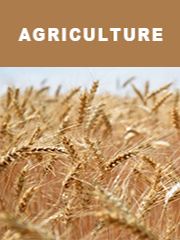Report overview
Digital Farming/Digital agriculture refers to the use of agriculture technology (AgTech) to integrate agricultural production from the paddock to the consumer. These technologies can provide the agricultural industry with the tools and information to make more informed decisions and improve productivity.
This report aims to provide a comprehensive presentation of the global market for Digital Farming, with both quantitative and qualitative analysis, to help readers develop business/growth strategies, assess the market competitive situation, analyze their position in the current marketplace, and make informed business decisions regarding Digital Farming. This report contains market size and forecasts of Digital Farming in global, including the following market information:
Global Digital Farming Market Revenue, 2018-2023, 2024-2029, ($ millions)
Global top five companies in 2022 (%)
The global Digital Farming market was valued at US$ 3540.6 million in 2022 and is projected to reach US$ 9542.8 million by 2029, at a CAGR of 15.2% during the forecast period. The influence of COVID-19 and the Russia-Ukraine War were considered while estimating market sizes.
Global digital farming main players include BASF, Bayer-Monsanto, DowDuPont, Syngenta, KWS SAAT SE, Simplot, Netafim, Yara International, etc., totally accounting for about 48% of the market. Americas is the largest market, with a share over 39%. As for the types of products, it can be divided into software and service and hardware. The most common product is software and service, with a share over 84%. In terms of applications, it is widely used in farmland and farms and agricultural cooperatives. Farmland and farms is the largest application, holding a share over 83%.
We surveyed the Digital Farming companies, and industry experts on this industry, involving the revenue, demand, product type, recent developments and plans, industry trends, drivers, challenges, obstacles, and potential risks.
Total Market by Segment:
Global Digital Farming Market, by Type, 2018-2023, 2024-2029 ($ millions)
Global Digital Farming Market Segment Percentages, by Type, 2022 (%)
Software & Service
Hardware
Global Digital Farming Market, by Application, 2018-2023, 2024-2029 ($ millions)
Global Digital Farming Market Segment Percentages, by Application, 2022 (%)
Farmland and Farms
Agricultural Cooperatives
Global Digital Farming Market, By Region and Country, 2018-2023, 2024-2029 ($ Millions)
Global Digital Farming Market Segment Percentages, By Region and Country, 2022 (%)
North America
US
Canada
Mexico
Europe
Germany
France
U.K.
Italy
Russia
Nordic Countries
Benelux
Rest of Europe
Asia
China
Japan
South Korea
Southeast Asia
India
Rest of Asia
South America
Brazil
Argentina
Rest of South America
Middle East & Africa
Turkey
Israel
Saudi Arabia
UAE
Rest of Middle East & Africa
Competitor Analysis
The report also provides analysis of leading market participants including:
Key companies Digital Farming revenues in global market, 2018-2023 (estimated), ($ millions)
Key companies Digital Farming revenues share in global market, 2022 (%)
Further, the report presents profiles of competitors in the market, key players include:
BASF
Bayer-Monsanto
DuPont
Syngenta-ChemChina
KWS SAAT SE
Simplot
Netafim
Yara International
Outline of Major Chapters:
Chapter 1: Introduces the definition of Digital Farming, market overview.
Chapter 2: Global Digital Farming market size in revenue.
Chapter 3: Detailed analysis of Digital Farming company competitive landscape, revenue and market share, latest development plan, merger, and acquisition information, etc.
Chapter 4: Provides the analysis of various market segments by type, covering the market size and development potential of each market segment, to help readers find the blue ocean market in different market segments.
Chapter 5: Provides the analysis of various market segments by application, covering the market size and development potential of each market segment, to help readers find the blue ocean market in different downstream markets.
Chapter 6: Sales of Digital Farming in regional level and country level. It provides a quantitative analysis of the market size and development potential of each region and its main countries and introduces the market development, future development prospects, market space of each country in the world.
Chapter 7: Provides profiles of key players, introducing the basic situation of the main companies in the market in detail, including product sales, revenue, price, gross margin, product introduction, recent development, etc.
Chapter 8: The main points and conclusions of the report.
